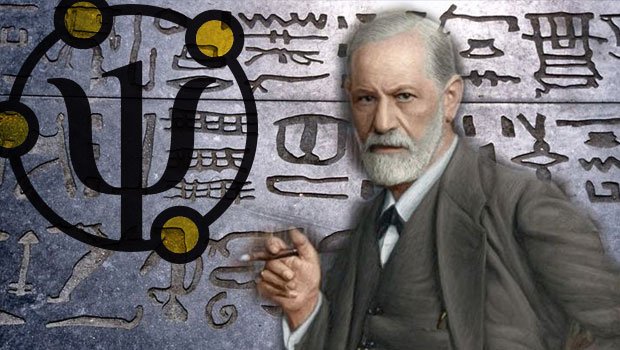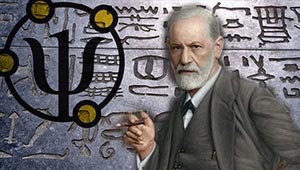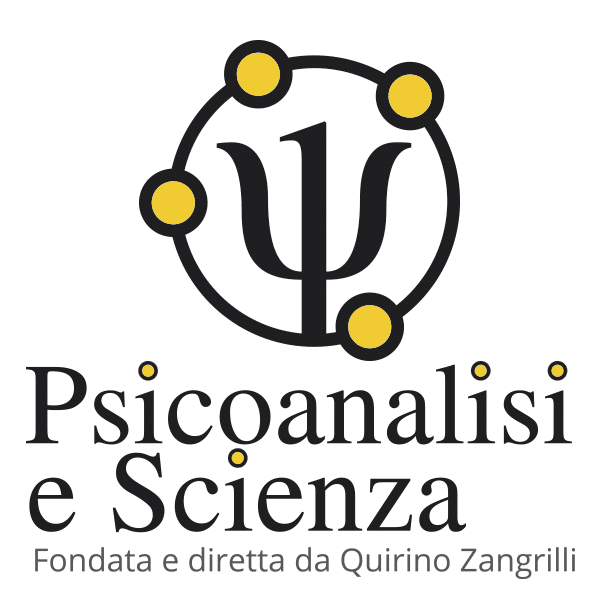Sommario
I believe that whoever deals with psychotherapy and psychoanalysis will have verified that the themes, which mainly express the sufferance of human beings, are the loving dissatisfaction and the experience of incomprehension and delegitimization in each family.
They are obviously interconnected.
Doctor Bruna Marzi has already given a clear demonstration in the article “Esclusioni ed Incontri: il ruolo delle ripetizioni filogenetiche” (“Exclusions and Encounters: the phylogenetic repetition role”) appearing on the electronic pages of this Journal.
Floods of tears are shed in each psychoanalysis in describing amorous hardships which, when they are not tied to explicit sadomasochist dynamics, describe, at the least, experiences of incomprehension, the lack of response, refusal and rejection.
– Definition
“Love, in its two aspects of sentiment and sexuality, is essentially the expression of the human need to mitigate his solitude. From a micropsychoanalitic point of view his essential goal is to achieve a contact, which leads to the fulfilment of an authentic psychobiological fusion with another person. Our existence results, we must not forget, from a primary fusion between the maternal ovule and the paternal spermatozoid, which give origin to a vital ephemeral project that has the only aim of perpetuating the genetic patrimony with a successive union, giving place to the creation of a new individual. We love with the aim of escaping from the void from which we derive and towards which we are inexorably attracted. And we love in the attempt of restoring that situation of aggregation which, almost challenging the laws of nature, allow the fertilized ovule, bearer of genetic material incompatible with the maternal immunosurveillance system, to pursue its growth (the pregnancy is the only exception existent in nature to the histocompatibility rule which causes an immediate immunitary reaction of an organism when genetic incompatible material is implanted into it”. 1
– Everything begins before us
In accordance with the hypothesis of scientific models of whom I make constant referral (Freud, Fanti and Peluffo), which I have punctually verified in over twenty years of clinical experience, I believe that the traumatic events in any phase of development are memorisable and determine the fixation nucleus which will influence the structuring that follows of the psychobiological attempts of the human being. 2
We have an infinitive amount of clinical evidence of this phenomenon 3 but I think that it is sufficient to consider the capabilities that all living organisms have (even the unicellular ones) to retain information concerning traumatic events; information that is stored at a cellular level, in every zone of the organism and not only in the noble cerebral cortex.
The amorous choice is conditioned by the individual psychobiological ground.
It would be sufficient to study with attention the hundreds of genealogical trees created by L.Szondi and Coll. 4 to give us a precise idea. I will mention, for instance, only one, the simplest to visualize graphically:

– To love: a titanic enterprise
We can affirm that, on a microscopic, cellular level, the search for the Other, the fusion and the state of pregnancy, are achieved by overcoming a defence, and therefore a fear. I will be clear: I don’t think that love is reducible to the simple biological aspect, as for example the recent biochemical Eros seems to affirm.
The trains of neural impulses or the ferohormones and other delicate functions studied by Psychoneuroendocrineimmunology (PNEI) that appear synchronically with the amorous situation, are only the somatic aspect of an extremely complex phenomenon and inextricably connected to the psychic life (affect and mental representation), of whose layers, as in every other aspect of the existence, pass over the individual life and implant their roots into the phylogenesis.
If, therefore, love is at the service of the vital project the idea that the expression of such a primary function can be continuously disrupted by a concomitant internal conflict can seem strange to us.
In the first place, the instinctual pressure for physical contact, fusion and interpenetration, must overcome another pressure, of an opposite sign, inscribed in every organism: the conflict with the Other or the Adversary which happens incessantly on a cellular and immunitary level, in other terms it manifests itself in the reactions which tend to maintain the integrity and the uniqueness of the somatopsychic structure: the phagocytosis and the reject (Peluffo, 1973). This activity of safeguarding ones very own uniqueness also exists and manifests itself on a psychic level and the unconscious interaction that exists between people allows there to be pressure to eliminate the adversary, deep within each one of us and very often, the partner unconsciously assumes the aspects of the Adversary.
– The amorous hallucination
The amorous relationship, just as every other psychic relationship, is essentially regulated by an unconscious rapport between iconic facets activated within subjects who are involved in the amorous relationship.
We can imagine the latter, not as a rapport between A and B (the two subjects in love) but as a rapport mediated by the interposition between A and B, of a series of facets of the Image, constituted by the imagoes which have been introduced as a part of the genealogical iconic material, which comes from the phylogenetic iconic background, that are active in their mind. These imagoes react as a type of satellite communication between station A and station B.
(See the animation about the Transference of the Atlas of “Scienza e Psicoanalisi” by Zangrilli-Fornari).
Our life derives from an absolutely casual mix of circumstances, which lead both the parents to a sexual union. If, most certainly, from a somatic and genetic point of view, we are children of the two people who have united sexually and have offered their gametes for the enterprise, from a psychic point of view, whose children are we?
Lets think about the moment constituted by coitus between potentially prolific subjects. In the social delusion we can believe that this union of feelings has happened under the influence of an unconditioned love.
The material collected in the psychoanalytic sessions shows us, in a completely indisputable manner, that the activity of fantasies, which give support to the erotic excitement, is an uncontrollable kaleidoscope.
But if we could achieve an iconic concentration of the total fantasmatic activity synchronous to the sexual act, we would obtain two well-defined images: She truly makes love with the object of her Oedipus fixation, and He does too.
Sometimes, during the session, I enjoy myself (in a manner of speaking) of thinking about: “Who does this child, from a psychic point of view, belong to?” – certainly not to his biological parents, but surely to the incestuous imagoes which have been reactivated in the act consumed.
In other words, I, son of my biological father Y and my biological mother X, am in reality psychically son of YY (father of X) and of XX (mother of Y) (on condition that these have been the real incestuous fixations). 6
Take your time to read carefully and repeatedly the previous sentence: it is worth it.
Sometimes the incestuous desire is so strong that the fruit of conception becomes the new pole of investment of the incestuous Oedipus fixation.
A child/lover is conceived who will remain so for the entire existence of the two subjects (this is a theme masterfully illustrated by great Italian directors such us Visconti and Pasolini).
To comprehend better that which I intend to demonstrate, we should illustrate the micropsychoanalytic concept of Image.
In Silvio Fanti’s definition, the Image is the “genetically organized Set of the representations and of the emotions that structure the unconscious starting from the Id”. 7
This definition implies, as underlined by Peluffo (Il persecutore, Scienza e Psicoanalisi, 2003) that the mnestic traces of the traumatic events and of the fixation nucleus, organize themselves in sets of information, which then shift themselves from the Id into the unconscious and programme it.
Thus structuring aberrant software, based on primordial traumatic experiences, which from that moment will dictate psychic and psychosomatic behaviours for the rest of the existence.
The storage at the primary process level will ensure that these instructions of psychobiological behaviour are unchangeable without a very deep analysis (decomposition and loss of structure).
This fusional love, which structures itself in the uterus, is indissoluble: it continues to subsist for the rest of the existence even though camouflaged by superstructures and by successive attempts.
The sad sequel of the failed loves lies within the fact that the subjects who cannot crown their dream of love are in reality unified and pervaded by an unconscious Imago, often without even knowing it.
The following clinical case, the latest of many, can give the reader an idea of the profoundness of the ancestral conditioning.
– The clinical case
A young woman, suffering from a severe metabolic disease, belonging to a family (like most others) characterized by a remarkable incestuous impulsion, not acted out. The patient’s mother, in particular, lives an unconscious love, highly idealized, with her own brother, a renowned doctor, who is seen as a type of semi-God in the imaginary of the family.
It is most probable that the phantasmatic cathexis for her brother at the moment of conception (of her daughter) and for the entire pregnancy handed down the whole event to her daughter, who cherished, without knowing it, an immense love, of which only in analysis she would find out the sexual connotations, towards her uncle.
The health care of the child is handed over to the Doctor (her uncle). It’s clear how rationally such procedure is the most obvious: why look for an external consultant when there is an established professional in the family?
In reality, and my experience confirms it punctually, accepting to be the family’s doctor exposes the family and the doctor himself to a painful dynamic in which the processes of possession-destruction of the Object produce illnesses that intertwine themselves with amorous attempts of healing.
One of the possible results of this dynamic can be the structuring of chronic syndromes. The unconscious, in the attempt of obtaining satisfaction, can progressively raise the stakes in a manner to create urgency, which eliminate the deontological doubts.
To be brief I will only report the clinical material, produced during the observation and the analysing, with a magnifying glass, of a wedding photograph which portrayed the young woman linking arms with her uncle (who had given her away in the place of her father!), related to the amazing realization of the incestuous fixation:
“There is my uncle dressed as the groom and I dressed as the bride. I’m ashamed of myself! We really look like two people who are going to get married (she cries intensely expressing enormous affect). And I was even pregnant here … and I was about to say “I was pregnant by someone else!” (LAPSUS). I mean “I wasn’t pregnant by my uncle … I had been unfaithful to him …
It’s as if we had got married. My uncle is gesticulating as if to say ‘OK’ and my son has done the same thing, since he was a baby … I’m embarrassed to be arm in arm with my uncle and for being so happy about it! And I am ashamed of him because he is so happy and is in my husband’s place! Since I began my psychoanalysis my uncle is no longer interested in me. It’s crazy because I’ve only just realized that I’m married and that I have never belonged to my husband! And on the first night of the wedding I made sure that I would spend it in my uncle’s town. I have never been able to break away from there: I was like a yo-yo! It’s madness! A whole life attached to him, without knowing it! You are the first doctor whom I have been to without asking for his opinion it had never happened to me before! During my adolescence I had never fallen in love with anybody because I already belonged to this dickhead! For a while I even desired him physically: I wanted him! I’m so ashamed of it! I desired my uncle in the same way that I desired You!” (the first phase of the analysis had been completely occupied by the difficult task of neutralizing the erotization of the transference, in reality a resistance, of displacement: I, the Doctor, as the incestuous object).
Clinical material of this kind is of common finding in our profession.
Every time I encounter it I can’t help but ask myself what whispering “I love you” means.
Written by: Quirino Zangrilli © Copyright
Translated by Linda De Nardo
Note:
1 Q. Zangrilli, La vita: involucro vuoto, Borla, Roma, 1993.
2 Consult the definitions “fixation” and “repression” in the “Atlante di Scienza e Psicoanalisi” written by Zangrilli-Fornari.
3 For those who are not familiar with my articles regarding this theme references can be found in:
– “La strutturazione dell’idea delirante”.
– “ Traumi intrauterini ed alcolomania”.
– “Modalità di trasmissione transgenerazionale dell’Immagine”.
– “Trasmissione transgenerazionale dell’Immagine con particolare riferimento alla determinante filogenetica della paranoia”.
– “Vita fetale e destino psicobiologico”.
– “Sogno e telepatia”.
4 L . Szondi, Introduzione all’analisi del destino, Astrolabio, Roma, 1975.
5 L . Szondi, Introduzione all’analisi del destino, Astrolabio, Roma, 1975.
6 It is of particular interest regarding this theme to read the contribuitions made by Gioia Marzi about Oedipus II and Oedipus III, published in this Review.
7 Fanti, Codoni, Lysek, Dizionario di psicoanalisi e di micropsicoanalisi, def. n° 219, Borla, Roma, 1984.
Nel 2024 riceve il Premio Accademico d’Onore della Accademia Culturale Internazionale Cartagine 2.0.
Nel 2024 docente ad Almaty – Kazakhstan presso il workshop di psicoanalisi sul tema della violenza, promosso dall’Università di psicoanalisi di Mosca in collaborazione con l’Istituto svizzero di micropsicoanalisi.
Doctor Quirino Zangrilli was born in Fiuggi in 1955. Graduated with honours in Medicine and Surgery in 1980, he practices Psychoanalysis, with intensive method, since 1982. He is author of 72 scientific pubblications. He has attended as speaker or president of session to many national and international scientific Conventions. His book “La vita:involucro vuoto” (Life: empty involucre), published by Borla in 1993, has been in use by the Chair of Dynamic Psychology at Turin’s University since 1994. He is the author and founder of the multimedia review “Psicoanalisi e Scienza” (Psychoanalysis and Science), the most read Italian on line review of psychoanalysis. In 2012 he participated as a Speaker at the Scientific Festival of BergamoScienza. In 2013 he illustrated his research on the maternal-fetal interaction in the Special Session of the XI World Congress of Perinatal Medicine in Moscow with his relation “Intrauterine Imprinting”. He is visiting teacher at Moscow Institute of psychoanalysis and training psychoanalist of Swiss Institute of Micropsychoanalysis.
In 2024 he is a teacher in Almaty – Kazakhstan at the psychoanalysis workshop on the topic of violence, promoted by the Moscow University of Psychoanalysis in collaboration with the Swiss Institute of Micropsychoanalysis.
In 2024 he received the Honorary Academic Award of the Carthage 2.0 International Cultural Academy
Le Le Docteur Quirino Zangrilli est né à Fiuggi en 1955. Diplômé avec mention en Médecine et Chirurgie en 1980, il pratique la psychanalyse depuis 1982, en utilisant une technique intensive. Il est l’auteur de 72 livres et publications scientifiques. Il a participé en tant que conférencier ou président de session à de nombreuses conférences scientifiques nationales et internationales. Son livre “La vie : enveloppe vide”, publié par Borla en 1993, est adopté depuis 1994 par la Chaire de Psychologie Dynamique de l’Université de Turin. En 1994, il a reçu le “Prix national Ciociaria de médecine”. Il a conçu et fondé le magazine multimédia “Psicoanalisi e Scienza”, qui est le magazine de psychanalyse en ligne en italien le plus suivi au monde. (Source : Entireweb, Alexa, Google, Virgilio, Arianna., etc.). En 2012, il a participé en tant que conférencier à la colloque scientifique de BergamoScienza. En 2013, il a exposé ses études sur l’interaction materno-fœtale lors de la session spéciale du XIe Congrès mondial de médecine périnatale à Moscou avec le rapport “Intrauterine Imprinting”. Il est chargé d’enseignement au cours de spécialisation de trois ans en psychanalyse, psychothérapie psychanalytique et consultation psychanalytique à l’Université de Moscou. Il est membre didacticien de l’Institut Suisse de Micropsychanalyse et de la Commission pour la Pratique de celui-ci.
En 2024, il enseigne à Almaty – Kazakhstan à l’atelier de psychanalyse sur le thème de la violence, promu par l’Université de Psychanalyse de Moscou en collaboration avec l’Institut Suisse de Micropsychanalyse.
En 2024, il reçoit le Prix Académique Honoraire de l’Académie Culturelle Internationale Carthage 2.0.
В 2024 году является преподавателем в Алматы – Казахстан на семинаре по психоанализу на тему насилия, проводимом Московским университетом психоанализа в сотрудничестве со Швейцарским институтом микропсихоанализа.
В 2024 был награжден Почетной академической премией Академии Международной Культуры «Карфаген 2.0».













